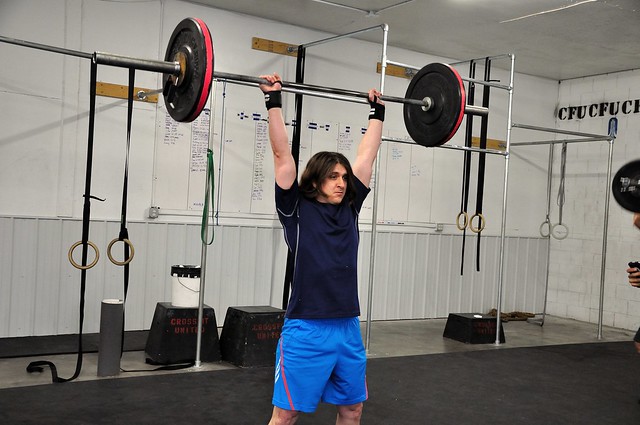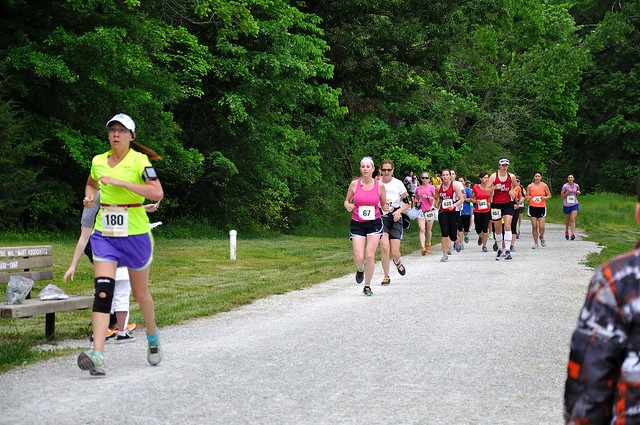While I was writing a little recap of our weekend yesterday, I started getting messages about an article that had just come out on Medium. I’m not going to link to it here because I don’t want to give it or its author a single pageview. I hate troll baiting journalism — almost as much as I hate people who grab for attention by passing it along without even reading it. But if you want to find it, I’m sure you will. I’ll even toss you a bone by repeating its salacious title:
CrossFit’s Dirty Little Secret.
I guess I can kind of get it. Create a scandal, expose some dark, hidden secret of a popular fitness movement. Create fear and distrust. Although the movements aren’t new, CrossFit itself is, making it a fun and easy target, guaranteed to generate clicks and shares from lovers and haters alike. It’s easy pickings. A slam dunk for any journalist with a tight deadline.
So what is CrossFit’s Dirty Little Secret? It’s Rhabdomyolysis guys. And it’s such a secret it was hiding in plain sight.
Rhabdomyolysis is an extremely rare condition that may arise in athletes when muscle tissue breaks down and the contents of muscle cells are released into the bloodstream. One molecule in particular, myoglobin, is toxic to the kidneys and can cause kidney failure and, in the most rare and severe cases, death.
Where did I get this top-secret information? An article in the binder from my CFL1 class — which is duplicated across dozens of CrossFit sites, including main site and CrossFit Journal. We spent almost an hour discussing it, and it was on the test. Before that? I learned about it from my coaches as an athlete.
Scenes from this year’s Go Girl Half Marathon.
I’m not here to tell you that Rhabdomyolysis doesn’t happen to CrossFitters. It wouldn’t be true at all. What I am here to tell you is that it’s not exclusive to CrossFit, a problem CrossFitters laugh at or take lightly, or something that we’re trying to hide in order to keep people in our boxes. And unfortunately, I feel that our openness and willingness to acknowledge Rhabdo as a risk of our sport in order to create awareness makes us an unfair target while doing a disservice to people who then believe certain types of fitness are “safe” from risk — which is hardly the case.
The reality is that while you don’t “know” anyone who has had rhabdo, many athletes have suffered from slight cases of it when their muscles have been sore and tender after exercise. It can happen to novices and elite athletes. It’s not sports-specific. Hell, you can even get it from dancing. And while many reactions tout the importance of common sense and personal responsibility (which I wholeheartedly agree with) — education and awareness are just as important for coaches and athletes in EVERY SPORT.
Strategies to reduce the risk are namely the gradual introduction to intensity. If you’re thinking about CrossFit, find a good gym. One that has a diverse high-level coaching staff and a comprehensive on-ramp program. At our gym, we introduce athletes to CrossFit workouts gradually over 4 weeks of 3x times weekly training sessions (which can be done in a class or individual setting based on assessed need). You’d never just go out and just run a marathon, and that’s our position and responsibility in safely introducing people to CrossFit. It’s not something that should be done quickly — for many reasons beyond “Uncle Rhabdo.” And rhabdo does come up in conversation, because at some point everyone runs across an article like this — and we’re not afraid to talk about it. Because while you can’t separate the risk from reward in any kind of fitness, you can educate and inform without needlessly creating fear. Engaging in fitness, especially one based in functional movements optimized for life, is still far more beneficial than doing nothing. It’s just a shame this author doesn’t feel the same way.
Sorry for the rant, but thanks for letting me get it out there.
You may also like









Thanks for the information! I saw that article circulating on FB and read it. I’d never heard of Rhabdo, but then I’ve never been a member of a box, so the omission, in my case, makes sense. This article reminds me of the one about how yoga can wreck your body, which everyone was passing around last year. Basically, in almost ever case of exercise related injuries, it comes down to having qualified instructors/trainers who know what they’re doing.
Well and as Ben said in the video, he would never had heard of Rhabdo had it not been for the awareness of his coaches and fellow CrossFitters in his box. There are so many people who engage in fitness every day without the assistance of coaches or other people. They are at risk for rhabdo as well, especially distance runners and those doing HIIT work solo.